7 Cruciferous Vegetables to Promote Heart Health
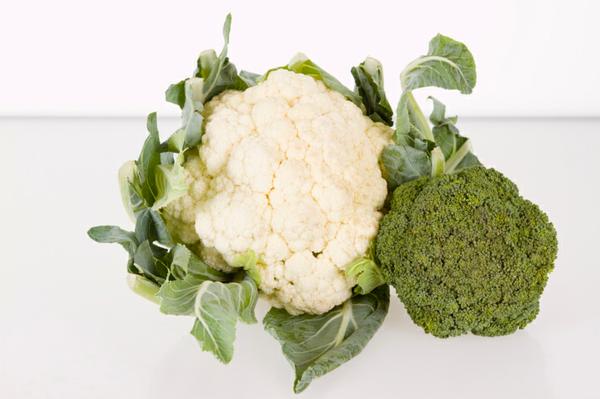
Do you consume 2 ½ cups of vegetables daily as recommended by the 2015 Dietary Guidelines for Americans?
Cruciferous vegetables are a nutrient-rich option for boosting daily vegetable intake. These vegetables are a good source of dietary fiber, vitamins K, C, and E, folate, calcium, and potassium.
Research indicates there may be a link between some of the nutrients and phytochemicals contained in cruciferous vegetables with reduced cancer risk and improved cardiovascular health.
Here are 7 cruciferous vegetables to incorporate in your diet:
#1 Kale
One cup of Kale provides over 1000 mcg of vitamin K. The fiber, potassium, folic acid, and vitamin C found in kale support heart health. Select dark, colored bunches of kale, avoiding yellow and brown leaves.
#2 Broccoli
Microwave or steam broccoli instead of boiling it to reduce nutrient losses. You can consume both the stalks and the florets. Broccoli is a rich source of the enzyme sulforaphane, which is involved in liver detoxification and three B vitamins ( B6, B12, and folate) that reduce homocysteine levels.
Folic Acid Benefits for Heart Health
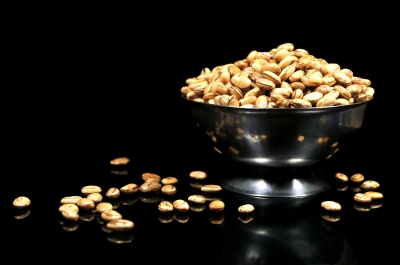
What is folic acid?
Folic acid is synthetic form of the water-soluble vitamin B9. Folate is the natural form of this vitamin found in foods. There is debate surrounding which form of vitamin B9 is healthiest – folic acid versus folate, but I don’t want to explore that argument today. For the sake of our discussion, folic acid is equal to folate and I’m using the terms interchangeably.
Folic acid plays an important role in energy production and the immune system.
What folic acid benefits are connected to heart disease?
Homocysteine is an amino acid that comes from the normal breakdown of proteins in the body. Folic acid is one vitamin supporting the breakdown of amino acids. Research has suggested that deficiencies of folic acid and other B vitamins lead to elevated homocysteine levels, which has been evaluated as a potential risk factor for heart disease and stroke.
How much folic acid do you need daily?
What to stock in a natural, family-friendly medicine cabinet
 Children seem to have more bumps, bug bites and scrapes than anyone else in the family. Yet most over-the-counter (OTC) remedies have side effects that are risky to our little ones.
Children seem to have more bumps, bug bites and scrapes than anyone else in the family. Yet most over-the-counter (OTC) remedies have side effects that are risky to our little ones.
Sherry Torkos award winning pharmacist and author of Saving Women’s Hearts, has taken a moment to share some of her favorite picks for smarter, safer alternatives that are especially good to have on hand in the spring and summer. According to Torkos, most of these can be used for kids as young as two years old as well as the adults in your household.
- For painful bruises and bumps: Apply an ice pack to the area: 10 minutes on/10 minutes off. Ice helps relieve pain and reduce swelling, without the risk of serious side effects associated with aspirin, acetaminophen and ibuprofen. Similasan Arnica Active Spray might also be effective.
- For minor cuts and scrapes. Look for creams that contain calendula, which helps stimulate healing. Torkos family uses Calendula Intensive Skin Recovery by Weleda. It contains bees wax, sesame oil and calendula.
- For itchy skin caused by bug bites, poison ivy or poison oak: Oatmeal can help calm and soothe skin itching, but ready made products can be expensive. Instead, grind whole oats in a coffee grinder to release their oils. Put a half cup of the ground oats into the bath water. Add a couple drops of lavender. Another alternative is Desert Essence Tea Tree Oil Skin ointment. Tea tree oil has antiseptic, anti-bacterial and anti-viral properties. It helps take the sting and itch out of bug bites, and it’s good for minor cuts and irritations.
- For foot fungus: Kids tend to get athlete’s foot because their feet get moist from playing sports, or they spend a lot of time at the neighborhood pool. Make a foot soak by putting a couple of drops of tea tree oil into a small basin of water.
High Salt Diet Impacts More Than Blood Pressure
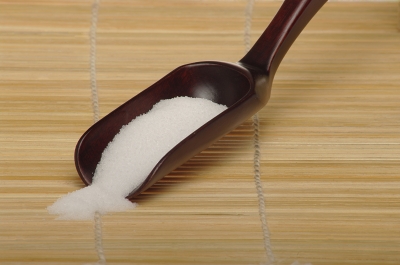
If your blood pressure is normal, that does not mean you can ignore how much salt you consume.
A high salt diet leads to:
- Reduced functioning of the endothelium. The endothelium is the inner lining of blood vessels which mediates coagulation, immune function, and platelet adhesion.
- Stiffening of arteries. The stiffer the arteries, the harder the heart works.
- Enlargement of the muscle tissue comprising the wall of the heart’s main pumping chamber. This enlargement can cause the heart to not pump blood with optimal force and efficiency.
- Impaired sodium-potassium balance causing reduced kidney function.
- Increased calcium excretion into the urine increasing risk for kidney stones and osteoporosis.
- Increased risk for stomach cancer. Research has determined salt and salty foods to be a “probable cause of stomach cancer.”
- Weight gain connected to salty foods leads to thirst and consumption of high sugar beverages to alleviate thirst.
- Bloating and water retention.
- Aggravated asthma symptoms.
- Worsening Meniere’s Disease symptoms, such tinnitus and hearing loss connected to fluid retention resulting in increased inner ear pressure.
Adjust your diet to reduce salt intake.
Nearly three-quarters of the salt in our diet comes from processed foods. Restaurant meals tend to be higher in sodium than meals prepared at home.
Mediterranean Diet for Weight Loss and to Prevent Metabolic Syndrome
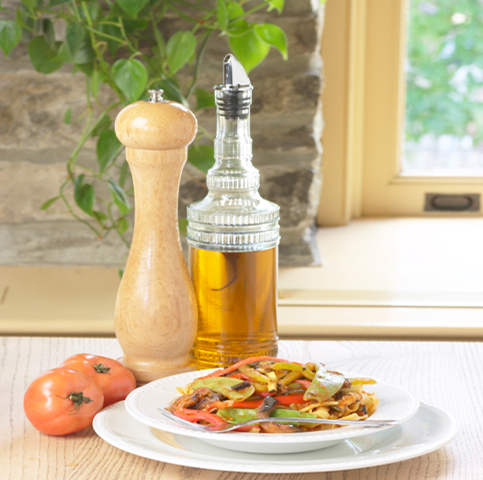
Metabolic syndrome is the presence of three or more of the following conditions…
- Fasting blood sugar of 100 mg/dl or higher
- Systolic blood pressure of 130 mm Hg or higher and/or diastolic blood pressure 85 mm Hg or higher
- HDL cholesterol less than 40 mg/dl in men or 50 mg/dl in women
- Triglycerides of 150 mg/dl or higher
- Waist circumference 40 inches or greater for men and 35 inches or greater in women in the US
This “cluster” of factors known as metabolic syndrome doubles heart disease risk with a five-fold risk increase of developing Type 2 diabetes. Metabolic syndrome has also been connected to cancers, including prostate, breast, endometrial, colorectal, and liver.
Metabolic syndrome affects 35 percent of US adults and 10 percent of adolescents.
Here are three steps to counteract metabolic syndrome:
Continue reading
Beans Health Benefits: Eat Dry Beans, Peas, and Lentils for Heart Health
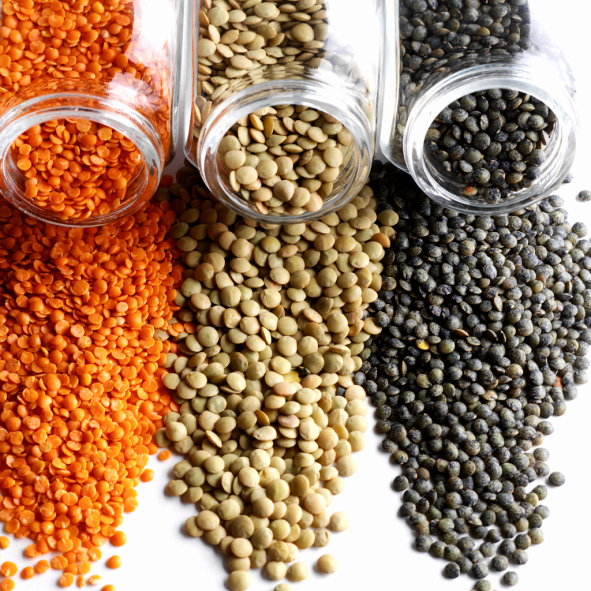 Dried beans, peas, and lentils include kidney beans, navy beans, chickpeas, Great Northern beans, black-eyed peas, split peas, and lima beans.
Dried beans, peas, and lentils include kidney beans, navy beans, chickpeas, Great Northern beans, black-eyed peas, split peas, and lima beans.
Dry beans, peas and lentils are a very economical option for adding protein and nutrients to your diet with a 1-pound costing an average of $0.15 per serving for dry beans and between $0.35 to $0.50 per serving depending on brand for canned beans.
Beans Health Benefits: Dry beans, peas, and lentils are highly nutritious
— Contain almost twice the protein of whole grains and all nine essential amino acids
— Provide both soluble and insoluble fiber
— Low in sodium. If prepared without added salt contain they contain almost no sodium. Canned options are higher in sodium. Select “low sodium” or “no added salt” options. Draining and rinsing canned beans, peas and lentils reduces sodium content by 41%.
— Contain almost no fat. Fat content depends on what is added during preparation.
— A plant source of iron. Plant iron sources are a little harder for the body to absorb. To boost iron absorption, combine with foods contains vitamin C.
— Rich source of magnesium, zinc, and potassium.
— Gluten-free



